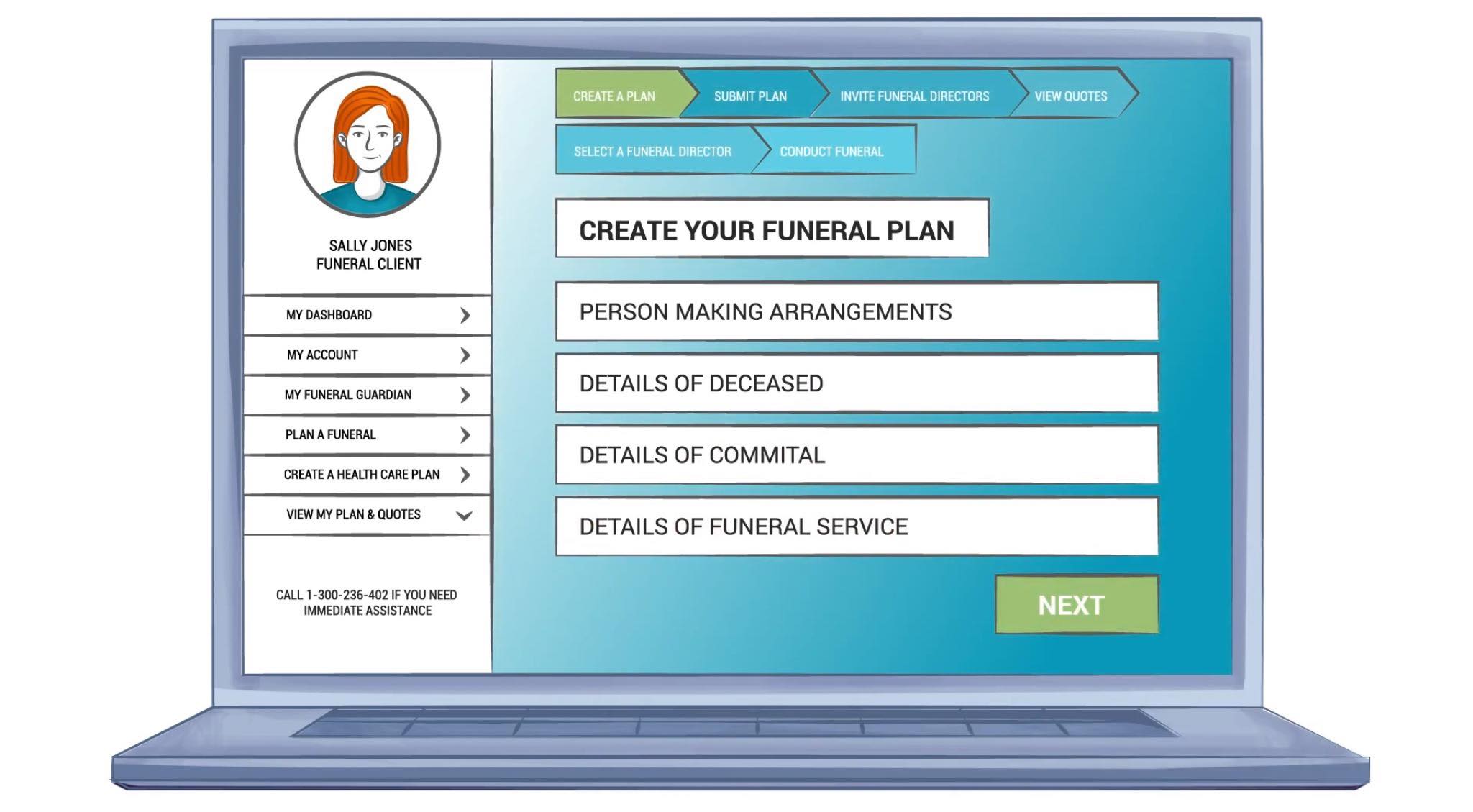Want to know more about Cremations? Find answers to commonly asked questions below:
What is cremation?
Cremation is a method for preparing the deceased for memorialisation Scientifically speaking, it is a process of reducing a deceased human body to bone fragments using high heat and flame.
What is direct cremation?
A direct cremation (also known as a basic cremation or no service no attendance cremation) is a cremation option with no funeral service or ceremony included.
What is the cremation process?
After a loved one passes, their body will be taken directly into the care of a licensed funeral director for preparation for the cremation.
The body is prepared and placed in either a basic wooden coffin or an environmentally friendly cardboard casket for the cremation to take place.
Your funeral director will complete all application and registration forms, including Doctor’s medical certificate, cremation permit, registration of the death and official BDM death certificate before the cremation can occur.
After cremation, the ashes of the loved one are returned to the family, either in a temporary container or an urn that was given to the crematorium in advance by the family.
How long does cremation take?
The exact time taken to cremate will depend on many factors including body mass, bone density and the materials from which the coffin is manufactured. The average time for an adult cremation is 90 minutes at a temperature of between 800 and 1000 degree Celsius.
From insertion to final cooling the cremation process may take up to four hours.
How much does cremation cost?
The exact cost of cremation depends on factors such as your state, whether an oversize coffin is required, transport if outside the 50km area, or if collection of the deceased is after hours.
How is the body prepared for a cremation?
The body is cleaned and dressed in a cotton shroud. It is important that items that could affect or endanger the cremation procedure are removed. Items include rings, watches and other mechanical objects which can explode in the cremator causing very serious damage.
Is embalming required before cremation?
No, state laws do not mandate embalming prior to cremation. Proper refrigeration technique eliminates that need. The family may opt for embalming when having a funeral service or a viewing.
Is more than one person cremated at the same time?
One person is only ever cremated at a time. The only exception could be in the case of a mother and baby or twin children. In those instances, approval is sought from the Health Department prior to the cremation.
Is a casket/coffin required for cremation?
It is a legal requirement to use a coffin or casket as all crematories require the deceased to be cremated in a combustible, leak-proof, rigid and covered container.
What happens to the coffin in a cremation?
The coffin or casket is cremated with the body during the cremation process. The heat and duration of the process means that the only thing that is left are materials that do not combust which are the metal parts from the coffin. These remaining materials are removed from the ashes before they are given back to the family.
What happens to the cremated remains?
The cremated remains are referred to as ashes. They are removed into a metal container and allowed to cool after cremation. Once cooled, the ashes are loaded into a homogeniser where they are finely ground down before being packed into a plastic container. They are then placed in the urn that the family provides or in a temporary container.
What can I do with the ashes?
After a body is cremated the ashes are usually memorialised in a permanent cremation memorial site. Even when they are returned to the family for scattering, it is common for a small amount to be permanently memorialised so that the family and future generations have somewhere they can visit and pay tribute to their loved one.
If you don’t wish to have a cremation memorial, there are some other options available. These include scattering ashes, keeping them at home in an urn and placing them in cremation jewellery. Take your time to choose something that brings you and your family peace of mind.
Must I buy an urn?
No, you are not required to buy an urn. The ashes are returned to the family in a temporary container if an urn wasn’t given in advance by the family.
How long before one can pick up the cremated remains?
Generally, the ashes are available to pick up within 24 hours of the cremation taking place.
Does cremation replace a funeral?
Cremation does not replace a funeral. It provides the family with more choices on the final resting place chosen. A family may elect to have a memorial service at a later date.
Can we have a viewing if we want a cremation?
Yes. If you are seeking a viewing of your loved one, your funeral director can assist you with this in addition to the cremation required.
Can I still have a memorial service if I use cremation?
Absolutely. Depending on the families wishes, a memorial service can take place any time after the cremation.
What religions allow cremations?
Christian denominations approve cremation, and it is the preferred method among Hindus and many Buddhists. However, is usually not acceptable within Orthodox Judaism, Islam and Eastern Orthodox.
The Roman Catholic Church no longer considers there to be a danger that Christian cremation will be associated with non-Christian belief, or with a denial of such doctrines as the resurrection of the body, immortality of the soul, and the existence of eternal life. The Catholic Church recommends cremated remains are disposed of in a way that indicates respect for the body of the deceased person.
How long does it take to cremate a body?
To complete the cremation process, it takes an average of two hours or until the body is reduced to bones and fragments.
The cooling process takes place afterwards, which usually takes about 30 minutes to an hour.
The cremation chamber or retort is preheated to around 2,000 degrees Fahrenheit. Upon reaching that temperature, the casket or body typically moves automatically into the chamber. This is done manually in less modern operations.
Can I collect the ashes?
The ashes are inspected and any metal form is excluded from surgical procedures, such as pins or screws. This is done with a magnet or manually.
The bone fragments are then put in a grinder type called a cremulator. The cremated remains are pulverized into a gritty sand-like consistency by this piece of equipment.
Subsequently, the ashes are usually placed into a temporary container, which is then given to the family.
How do I transport the ashes?
You may need to send the ashes or travel with them when the ashes go to different families. Travelling with a simple container like the one above is always a good advice.

About eziFunerals
eziFunerals supports individuals and families cope with end of life decisions, death and funerals. We are an independent, Australian-owned and operated company. We are not part of any other funeral company.
Our member Funeral Directors are chosen for their knowledge, quality, service, personalisation and experience. They go above and beyond, and will take the time to support the family.
For more information or to make contact with a trusted Independent funeral director, call eziFunerals on 1300 236 402 or visit www.ezifunerals.com.au.




